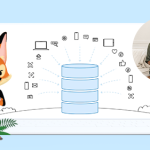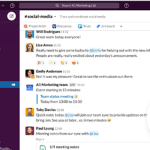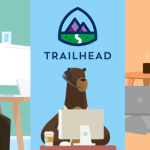The high inflationary environment and an impending global slowdown demand businesses to align every aspect of operations to revenue growth. In this scenario, it is crucial to create a work environment that offers a highly fulfilling employee experience – key to optimising performance and ensuring efficient business growth.
In fact, the global Salesforce Experience Advantage: Transforming Employee and Customer Experience for the Future of Work report, released in 2022, establishes a direct link between improving the employee experience and a 50% increase in revenue.
With this insight in perspective, I foresee five key workplace culture trends – around employee experience, consequently impacting customer experience, and thereby, unlocking greater revenue – that will play out in the future.
Fostering greater trust
In the post-pandemic work environment, employees tend to see their relationship with managers as a reflection of their association with the organisation. So far, managers, irrespective of their industry experience, have been slow in evolving into such guardians of trust and affinity.
74% of C-suite executives surveyed stated that the employee experience was not part of any member’s responsibilities. This gap makes it essential to constantly focus on manager capability and accountability with regard to employee experience.  True culture is the actual experience that every employee lives each day at work. This makes managers one of the most critical stakeholder groups in the process. At Salesforce, we have several manager training sessions, leadership development programs, and regular events that help managers build their leadership practice. Investing in manager capability to further their role as enablers will help us build sustainable leadership over time.
True culture is the actual experience that every employee lives each day at work. This makes managers one of the most critical stakeholder groups in the process. At Salesforce, we have several manager training sessions, leadership development programs, and regular events that help managers build their leadership practice. Investing in manager capability to further their role as enablers will help us build sustainable leadership over time.
Offering personalised flexibility
Companies that see the value of investing in employee experience will be clear in their work policies in future – they will offer team-wise and individual-wise fluidity rather than opt for one-size-fits-all mandates.
Businesses that will rank high in terms of employee experience will be the ones providing flexibility to employees to balance their professional and personal pursuits. However, such flexibility requires immediate managers to bring their teams together and discuss how they want to do their best work together.
Leveraging tools such as Slack will have a greater, two-fold role in this context. Firstly, Slack can provide employees with secure, seamless interfaces that enhance productivity without compromising on working styles. Secondly, it will help managers interact and understand employee needs for flexibility on an evolving basis.

Developing a broader view of inclusion
How we perceive effective inclusion will evolve in a flexible and fluid work environment. It will call for greater acceptance of different working styles and schedules to bring parity and unlock maximum potential. So, inclusion will not just be about making a place at the table for women re-entering the workforce after pregnancy. They should have access to the same information and resources, enabling them to feel they can contribute to the organisation’s efficient growth like everyone else.
70% of leaders report their employees have access to what they need to grow in the company. However, just 38% of employees agree with that statement. 
For this, organisations will have to relook at technology and workplace design.
52% of C-suite members believed their corporate technology to be working effectively, compared to just 32% of employees. Slack can help drive effective collaboration, cut down silos, and enable easier communication. The solution also makes it possible to track employee sentiment and get feedback from them on improving the efficacy of initiatives.
Again, all roads lead back to manager capability. The manager’s skill in engaging people, listening to their needs, and creating an enabling environment will ensure the success of the programs and processes we put in place.
Redesigning benefits and perks
Recognition remains critical to an engaging employee experience in the post-pandemic business environment. In this context, benefits and perks will grow from serving as frills to becoming core components that make an employee feel valued. However, this will not be simple; while we may think we know what employees value, employee needs and wants are evolving continually.
70% of leaders report their employees are happy, while only 44% of employees report they are. Hence, we will have to resist the urge to react immediately and shift all eggs from one basket to the other. As we shift between different work models, the benefits or perks that employees expect will also keep changing. However, we can safely say that organisations will need to focus more on creating communities that serve as safe spaces, encouraging team-building activities like volunteering, designing platforms that celebrate individual passions and hobbies, etc. To do so, they must invest in leveraging employee data to keep pace with changing expectations. 73% of C-suite executives say they do not know how to use their company’s employee data to drive change.

Offering meaningful employee experiences
Top talent will continue to work with organisations that offer a sense of purpose and meaning. Companies will have to enhance every aspect of the work culture and provide opportunities for upskilling, learning, and overall growth. As leaders, we must ask ourselves tough questions to offer meaningful employee experiences. How do we move from performing transactional tasks to allowing employees to go after high-value pursuits? How can we make technology work for us to simplify employee work and increase their productivity and efficiency?
At Salesforce, many of us have been surprised about how technology helps us engage meaningfully with each other apart from streamlining workflows and tasks. I frequently use Slack to interact over video with my team to foster a sense of connection, instead of doing so only when there is a work update. Then there are days when I choose to be off video because I need to clear my head. We need to use technology in a way that helps us achieve our potential, not let it overwhelm us. Additionally, Salesforce has also created equality groups for employees to connect over a common cause or shared belief. These also see high engagement, partly owing to the ease of access created by dedicated Slack channels.
A challenging macro environment helps create new opportunities
Ensuring a high-impact employee experience is not easy when companies need to be judicious with budgets and spending. However, it offers organisations an important inflection point. The current macro environment might be what we need to create more relevant opportunities for professionals, empower them differently, enable them to stretch in newer ways, and together, focus and prioritise what truly matters to them.

























